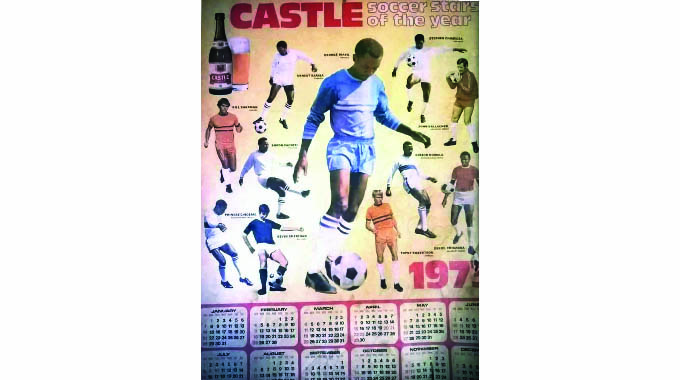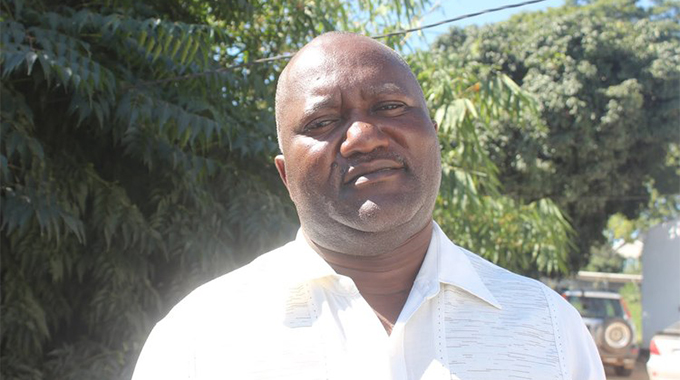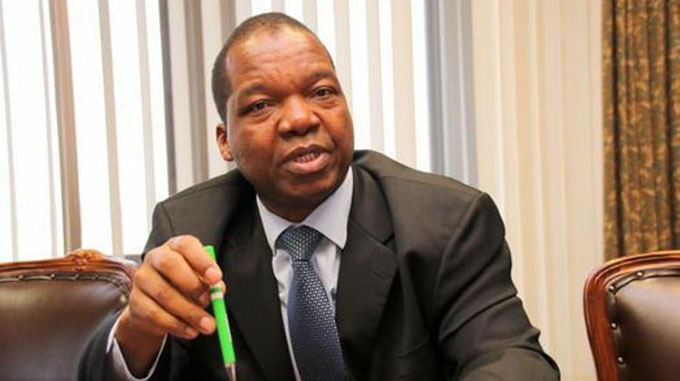Stars pushed into the shade

Eddie Chikamhi Senior Sports Reporter
TRADITIONALLY, around this time of the year, the domestic football fraternity would be buzzing with the curiosity and vigorous debates about who should be crowned the Soccer Star of the Year.
The awards banquet, which usually brings down the curtain on the domestic football season, ends the football calendar with a bang.
But there will not be any gathering this year as no competitive football was played because of the coronavirus pandemic. This is the first time this has ever happened in the history of the domestic game.
“It’s unfortunate we have nothing to celebrate in football in 2020,” said the 1993 Soccer Star of the Year award winner, Agent “Ajira” Sawu.
“It’s very sad and I feel sorry for the players. But everyone knows we are in the midst of a pandemic and there isn’t really anything that anyone can do to avoid the situation.”
Most significantly this year, the Premiership was supposed to hold its 50th edition of the event, which began in 1969 and grew in stature over the decades.
And over the years, players from the Northern Region have dominated the awards ceremony since George “Mastermind” Shaya’s milestone achievement in the inaugural edition of 1969.
In total, 45 people have won the Soccer Star of the Year award, with Shaya holding the record of winning five titles during a glittering career with Harare giants Dynamos in the 1960s and ‘70s.
Shaya was the first winner of the award in 1969. He came back to claim it in 1972 and three times in a row from 1975 to 1977.
After Shaya, there was also Tendai Chieza (Mangula, 1970), Peter Nyama (Chibuku Shumba, 1971), Ernest Kamba (Dynamos, 1973) and George Rollo (Arcadia, 1978). CAPS United forward Shacky Tauro was the last to win the accolade in the first decade when he was crowned in 1979.
The late Zimbabwe Saints star Moses “Madalaboy” Moyo was the only player from Southern Region clubs to shine during that decade when he was voted best player in 1976.
Former Zimbabwe international Gibson “Homeboy” Homela, who was Shaya’s contemporary, yesterday said there were too many good players during their time.
However, Shaya always stood a cut above the rest, hence his dominance.
“During our time we all knew that Shaya was the Soccer Star of the Year winner because he was very brilliant. In the end I personally really didn’t mind him winning it (many times) because he deserved it,” said Homela.
Another Dynamos player David “Yogi” Mandigora was crowned the first Soccer Star of the Year when the country gained its Independence in 1980. He edged the talented but controversial midfielder Archieford “Chehuchi” Chimutanda to the crown.
Stanley “Sinyo” Ndunduma became the first CAPS United player to win the award in the post-Independence era in 1981 and he repeated the feat in 1985 while turning out for the ambitious army side, Black Rhinos.
Despite the teeming infield talents during the early years of Independence, former Dynamos goalminder Japhet “Shortcat” M’parutsa sprung a huge surprise in 1982 when he was voted the best player in the league.
Ephert Lungu (Rio Tinto) and James Takavada (Zisco Steel) claimed the awards the following two seasons. DeMbare players returned to claim the honours when Moses Chunga was voted Soccer Star of the year in 1986.
Highlanders’ Mercedes “Rambo” Sibanda ended a 12-year drought for the Southern Region when he scooped the award in 1987.
Another defender from the region Ephraim Chawanda of Zimbabwe Saints was the best player the following season before Masimba Dinyero (Black Mambas) took it back for the Northern Region in 1989.
“It was a cut-throat competition but as players we didn’t see it in regional eyes,” said 1980 Soccer Star of the Year award winner, Mandigora.
“It was more of a personal fight for glory. Any player would tell you that it’s a big achievement just to be nominated among the best XI that make the calendar.
“I think the reason we had more players from the Northern Region winning the award over the years boils down to the simple fact that there are more teams here than from the Southern Region.
“Also check your records: it’s a fact that more titles have been won by teams from the Northern Region than the Southern Region. It’s because of the distribution of the teams in the PSL.
“Otherwise we have had some excellent players coming from all over the country, including from the Southern Region. In fact, during our days you wouldn’t know who the winner of the Soccer Star of the Year award was until the announcement was made.”
Highlanders teenage sensation, Peter Ndlovu, was probably the best player to grace the local football fields after Shaya.
He announced his arrival on the domestic football scene when he was voted joint winner with George Nechironga in 1990.
He then went on to win it again the following season before he left for England. Ndlovu could have dominated the Soccer Stars awards for longer if he had not signed for Coventry City in 1991.
When he left, doors were opened for Black Aces’ Wilfred “Silver Fox” Mugeyi (1992), Sawu (Zimbabwe Saints, 1993), Memory Mucherahowa (Dynamos, 1994), Stewart “Shutto” Murisa (CAPS United, 1996) and Wankie’s Walter Tshuma, in a controversial ballot in 1997.
The accolade is the ultimate glory for any player, apart from the league title.
“It was a big honour for me to win it,” said Murisa.
“It’s something that I would cherish for the rest of my life considering the competition that was there. It’s unfortunate that this year there won’t be the awards banquet. I feel sorry for the boys.”
Since the inception of the awards, 43 different players have bagged the prestigious accolade. There have been 31 winners from the Northern Region clubs in total, and 12 from the Southern Region. Traditionally, the Northern Region clubs have also produced more finalists on the calendar.
Former Warriors striker and 1993 Soccer Star of the Year award winner Sawu believes more players from the Northern region make up the calendar because of the many number of teams from their region.
“Basically, there are more teams in the Northern Region and if you have more teams, you stand a better chance of getting more players selected to the calendar. But I am happy I made it in 1993.”
The awards have been littered with highs and lows along the way with the major dent being the 1997 incident which led to the abandonment of the event the following year.
Matters came to head in 1997 following the disqualification of Edelbert Dinha, then a CAPS United stalwart, who had been odds-on favourite to win the award.
Journalists, who were unhappy with Dinha’s disqualification, decided, en-bloc, not to vote for Tauya Murehwa who had been Dinha’s main rival for the award and, suddenly, there was a surge of votes in favour of Hwange’s Tshuma.
The sponsors could not ignore the controversy and they cancelled their partnership. Legendary football commentator Charles “CNN” Mabika yesterday said the episode, which saw the selectors almost exchanging blows, was a huge dent on the integrity of the event. “Some journalists thought Dinha deserved it but there was a rule that disqualified him. There was a heated exchange and amidst the controversies Tshuma won.
“Not that he had not done well that season, but those who were bitter about Dinha’s disqualification decided to go for a protest vote. So, the sponsors pulled out because they felt the whole thing turned out to be a farce,” said Mabika. The legendary football commentator said what transpired on the day was a huge departure from the days when the event maintained its integrity intact with a panel made up of knowledgeable and esteemed journalists such as David Legge, Allan “Teacher” Hlatywayo, Jonathan Mutsinze, Ephraim Masiiwa, Chrispen Choga Ghavhure, Robson Mhandu, Assel Gwekwerere and Evans Mambara.
Recent Soccer Star of the Year selections have always left the football-mad Zimbabweans with divided opinions. Sadly, the selection event at some point has been reduced to a contest between the Northern Region and the Southern Region, with journalists being accused of choosing players from their favourite teams, or their cities, instead of choosing those who deserve the honour by virtue of having excelled on the field.
The issues that come to mind are the Denver Mukamba (Dynamos) versus Masimba Mambare (Highlanders) in 2012 and the divided loyalties between Tawanda Muparati and Silas Songani/Kuda Mahachi the following season.
“The divided loyalty from journalists has sometimes spoiled an otherwise brilliant football event. But I tell you the Soccer Stars awards still hold their significance. It’s unfortunate that this year the football stakeholders will not be able to congregate for this traditional event,” said Mabika. Unlike the yesteryears when the sports journalists called the shots, the organisers have constantly been working on the panel to preserve the integrity of the awards.
They have unveiled a revamped selection process in which the captains of the 18 top-flight clubs and their coaches have become part of the panel. The journalists still hold the largest representation in the panel with 30 votes while the team captains and the coaches have 18 apiece.
For transparency’s sake, the organisers have also adopted a new measure to publish the names of the people who participated in the selection process against the names they voted for.











Comments